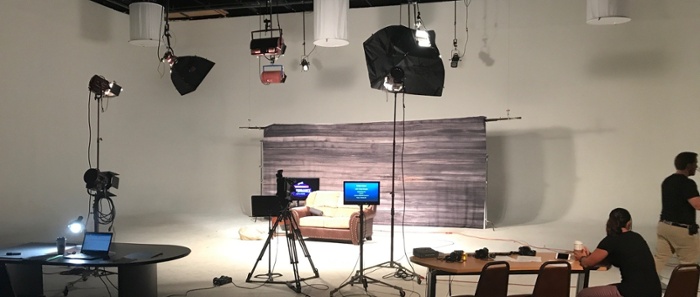When you’ve lived your entire life on one side of the fence, it can be hard to consider what things are like on the other side—even if you can see across. Such is the relationship between members of the media and marketers or PR’s. In some ways, we live such similar professional lives—but in other respects, our professions couldn’t be more different.
This divide is sometimes highlighted in moments where marketers are trying to do their jobs by giving journalists relevant stories, or well-written press releases, and yet they receive no love, and no coverage. I’ve witnessed their confusion. But in the 4media office, several of us have spent time in more than one newsroom, and we don’t often feel the same confusion. What’s the difference?
In some strange way, it’s a matter of understanding the pressure.
Somewhere, a public relations professional has scoffed at that clause. Yes, PR professionals, you too encounter pressure at work, but it’s unquestionably a different kind. As members of the Fourth Estate, journalists face pressures deeply unique to their particular line of work, and understanding where those pressures begin can be hugely helpful when thinking about how best to pitch to journalists, or communicate with directors on an SMT.
Let’s talk first about communicating with journalists.
Keep in mind, these are really busy people. As local newsrooms continue to shrink in the face of dwindling trust in media and decreasing ad revenue, the pressures once associated with turning a story are only multiplying.
If you consider that compounded by the increased scrutiny being place on reporters in the era of fake news, you have a veritable storm of circumstance making the job of a journalist quite difficult. So remember those things when you go to pitch them, and try and ask yourself when they may be most receptive.
4media group UK recently held a seminar designed to bring journalists and PR’s into the same space, and the results were enlightening. A panel of seasoned journalists reiterated that they are in fact busy, and pitches are often best received early in the day. If your pitch comes in too near noon, you’re not making the news list. And if it’s too early, it’ll probably be forgotten about by the morning meeting.
Something else occasionally ignored in public relations land is the value of extraordinary but succinct writing. When you’re pitching a journalist, it’s all in the subject line. That needs to be the best subject line you write all day, or your release may never be opened.
Next, think of how you can make that person’s life as easy as possible. When I worked in a newsroom, I would often ignore stories that didn’t include an image. You can have the greatest release in the world, but if you don’t give a journalist or content editor everything they need to post your piece with ease, it may never see the light of day.
Next, let’s talk a bit about booking and planning for satellite media tours.
Though different than pitching a journalist, many of the points made above are maintained, except you’re often dealing with producers and directors at television stations.
TV stations are facing many of the issues glaring in journalism at large. But one only recently discussed as much as maybe it should be has to do with the nature of news coming out of television stations.
A new report released recently by Nieman Labs suggests that local TV newsrooms may not be as local as we like to think—a piece of insight that should seriously inform anyone trying to sell a satellite media tour.
Our account coordinator in media pitching, Amanda Yates, had nearly 5 years’ experience in directing television news, before she made the jump to public relations. When I asked her about being the director behind brand-based TV segments, her advice was easy and immediate.
“If there are ways to spin a story locally, you should always do that. If you’re doing an SMT, and there’s a well-known local involved, you should pitch to that market,” Yates said. The benefit of being able to make a media tour local in any sense is that it takes a national story and places it on a more important scale for those directors you’re interacting with. That means you’re much less likely to get bumped if news breaks.
Ultimately, working with newsrooms in any context—whether pitching journalists, or working with producers and directors on the performance of an SMT—it comes down to being able to understand the unique pressures of their jobs. Once you have perspective, things get easier.
If you need help pitching the media, performing an SMT, or generally understanding a newsroom from the PR perspective, get in contact. 4media group has a unique newsroom perspective, garnered from a great number of employees who have been in news, and we’d love to help you out.
